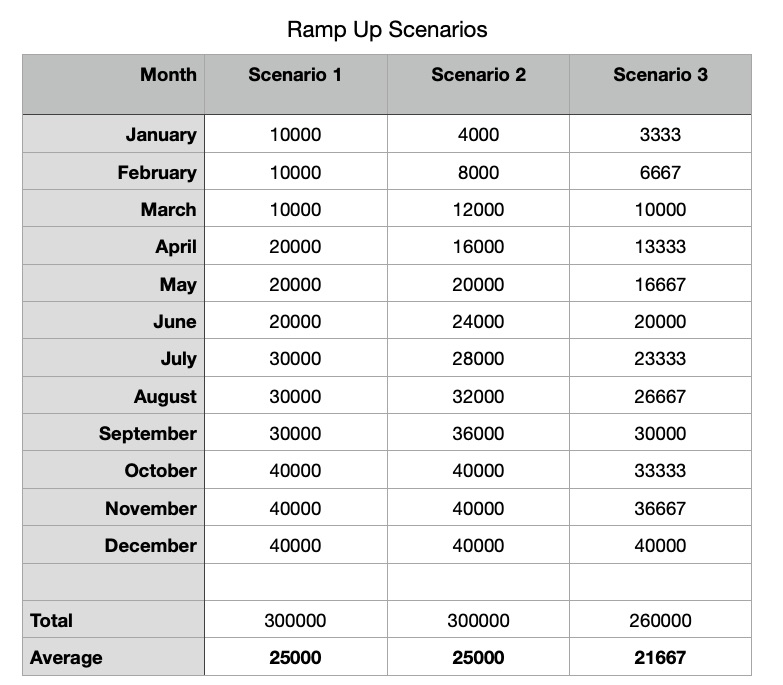In this simple example of the benefit of an Annual Universal Credit, imagine a customer who is looking to build infrastructure that has a total cost of 40,000 a month, it doesn’t matter the currency, as it’s illustrative only.
Once they have built their infrastructure and have reached the steady state of 40,000 a month, over an entire year they will consume 480,000 worth of credits.
However, you are never going to start a project on day 1 and immediately spin up the entire infrastructure, while it would that be impressive from a speed perspective, it’s even more unlikely you’ll be ready to migrate your entire infrastructure on that day. You are never going to go from 0 -> 100s of instances/databases etc. in very short order.
It is way more likely you are going to have a gradual ramp up as you migrate infrastructure and applications to the cloud. Your VM and PaaS usage will slowly increase, and your storage consumption will slowly go up, etc.
Therefore in this 1st year, while you are doing your migrations to OCI you will not need to consume the entirety of your commitment straight away.
I’ve modelled 3 scenarios of ramp-ups over an entire year. Once we reach steady state, we consume the entirety of the 40,000 of credits per month.
Ramp Up Scenario: 1
In this scenario we consume 10K a month of services for 3 months, then need 20K for another 3 months, 30K for 3 more months and finally we land at the full 40K for the rest of the year and going forward:
M1 -> M3: 10K
M3 -> M6: 20K
M6 -> M9: 30K
M9 -> M12: 40K
Essentially we are ramping up by 1/4 of the overall end-state consumption each quarter.
Ramp Up Scenario: 2
In this scenario we ramp up 10% in month 1, then 20% month 2, and so on, reaching our end state in month 10 and 100% of consumption:
10%, 20%, 30%, 40%, ….. 100%
M1: 10%
M2: 20%
M3: 30%
.
.
M10 -> M12: 100%
Ramp Up Scenario: 3
In our final scenario, we start with exactly 1/12 of the consumption and add 1/12 each and every month for the 12 months:
1/12, 2/12, 3/12, 4/12, ….. 12/12
M1: 1/12
M2: 2/12
M3: 3/12
.
.
.
M12: 12/12
This is how these play out over a year:

I find it amusing that the first two scenarios lead to exactly the same place – I have NOT deliberately set out for that to be the result.
Remember the end state consumption is 40,000 or 480,000 over a year. By having a ramp-up you can make huge savings, up to 45% in my example.
One note of caution, on ExaCS you need to be aware that the base price is not able to be ramped, as soon as you switch on (say) a quarter rack, you are paying that base price whether you consume 1 OCPU or the maximum.
